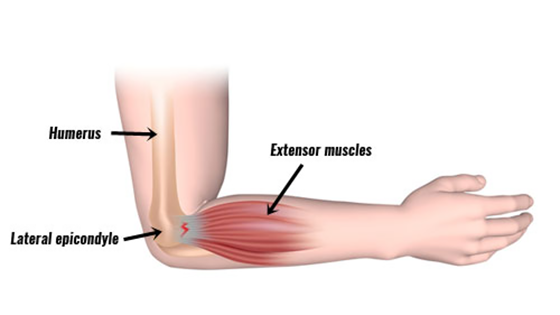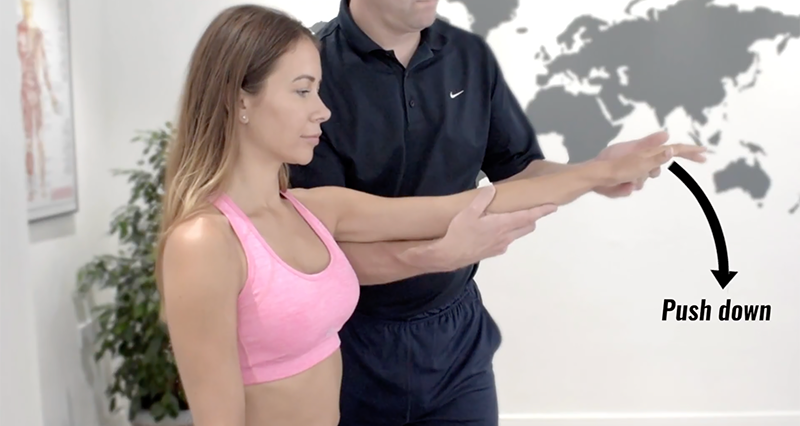The Mills test assesses for lateral epicondylitis or tennis elbow. Tennis elbow is inflammation or irritation of the tendons on the outside of the elbow. Specifically, those that attach to the bony prominence on the outside of the elbow or lateral epicondyle.
Overuse of the forearm muscles is a common cause. Symptoms include pain and tenderness on the outside of the elbow.
What is tennis elbow?

It is a general term people use to describe pain on the outside of the elbow. However, the specific diagnosis may be lateral epicondylitis, which is tendon inflammation. Or more likely, tendinopathy, which describes wear and tear or degeneration of the tendon.
How to perform the Mills test
Seat or stand the patient comfortably, with the affected arm relaxed and hanging by their side. Palpate the lateral epicondyle on the outer side of the elbow. Pronate the patient’s forearm so that their palm faces down. Then, flex the wrist by pushing it towards the floor. While keeping the wrist in flexion, extend the patient’s elbow by straightening the arm.
What is a positive Mills test?
Pain or tenderness at the lateral epicondyle when the wrist is fully flexed and the elbow extended indicates a positive result. This reproduction of pain suggests irritation or inflammation of the tendons attached to the lateral epicondyle, confirming the diagnosis of tennis elbow.

The Mills test is one of several clinical tests used to diagnose tennis elbow, along with other assessments such as palpation, resisted wrist extension, and Cozen’s Test. It helps to differentiate tennis elbow from other conditions that may cause similar symptoms, such as radial tunnel syndrome or osteoarthritis of the elbow.
Considerations
The Mills Test offers valuable diagnostic insight but must complement a thorough medical history, examination, and possible imaging for comprehensive evaluation. Additionally, perform it gently to prevent worsening symptoms.


